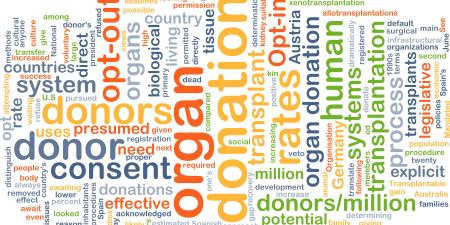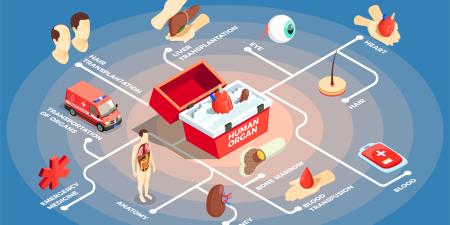The American Medical Association's Code of Medical Ethics has long been a guide to help physicians distinguish between right and wrong. But the Code does more than that; through its tone and language, the issues it chooses to address, and the timing of its opinions, it has the potential to affect social policy and societal norms.
The most obvious example of this power is probably the Code's opinion on abortion. Already in 1972, the Code stated that "the Principles of Medical Ethics of the AMA do not prohibit a physician from performing an abortion that is performed in accordance with good medical practice and under circumstances that do not violate the laws of the community in which he practices"—this at a time when abortion was illegal in most states.1 The opinion was cited in the 1973 Supreme Court decision Roe v Wade, which invalidated many of those laws.
The Code's abortion opinion is brief and reserved in tone, reflecting the continuing social unrest and political debate that surround the issue. Not so for the Code's opinions on organ donation and transplantation. Since the Judicial Council (now the Council on Ethical and Judicial Affairs) first issued guidelines on the subject in 1969, the overall disposition of the Code toward organ donation has shifted from caution to encouragement. Some of these opinions correlated with changes in public attitudes and the law. Others, in the spirit of the AMA's Principles of Medical Ethics, have actively sought increases in scientific knowledge and reconsideration of public policy.
A New Procedure
The first successful kidney transplant was performed in 1954 by Dr. Joseph Murray in Boston. In the following decades, physicians would learn how to transplant the lungs, the liver, the heart, and other organs. Improvements in the understanding of organ rejection and human body chemistry would later enable the recipients of donated organs to survive for years longer than expected. Now, thousands of transplants are performed each year in hospitals all around the country. Transplantation has gone from an experimental procedure to a standard form of therapy.
In 1969, the first year the Code included an opinion on organ donation, transplantation was still relatively novel.2 The first heart transplant had been performed just 2 years before in South Africa. Immunosuppressant drugs like cyclosporine had yet to be discovered, so organ recipients were not surviving nearly as long as they do today. In light of these facts, some worried that media attention was encouraging futile transplantations.
The 1969 opinion on organ donation addresses this fear through guidelines on how physicians should communicate with the media. "Medicine recognizes," the opinion says, "that organ transplants are newsworthy and that the public is entitled to be correctly informed about them."2 The opinion instructs physicians to protect their patients' privacy and to make a full, objective scientific report available to their peers as soon as possible. The opinion also attempts to prevent futile transplants by warning physicians that they and their patients should carefully consider all alternative therapies before attempting transplantation.
These parts of the opinion may now seem antiquated, but the bulk of the 1969 guidelines on organ donation have remained unchanged in the Code. The opinion reminds physicians that their primary duty is to their patients and that no one's level of care should be diminished because of a choice to be an organ donor. It seeks to eliminate conflict of interest with the rule that a potential donor's death should be certified by at least 1 doctor who is not caring for the potential recipient. It stresses that fully informed consent must be received from the donor or the donor's responsible relatives. Finally, the opinion instructs that physicians should only attempt the surgery if they have the facilities and skills to do so. These basic ethical guidelines for organ donation have not changed in the past 35 years.
The Shortage
What has changed over the years is the medical profession's perception of the potential of organ donation to save lives. In its early years, transplantation was viewed as a medical miracle. Now, a generation of physicians has been trained to perform transplants, and hospitals around the country are equipped to support the procedure. The only limiting factor is the supply of organs. According to the Organ Procurement and Transplantation Network, more than 88 000 people were on a waiting list for organs in July 2005, but only about
27 000 transplants were performed in all of 2004. In 2003, more than 7000 people died while waiting for organ transplants. The number of donated organs is growing each year, but the waiting list is growing faster.3
This shortage was first acknowledged in the Code in the 1981 opinion regarding the allocation of scarce medical resources, among which were listed donated organs and tissues. While the opinion stated that physicians should do everything they could for their individual patients, it also stressed that doctors should not be forced to make political decisions about resource allocation. This opinion also rejected distributing health resources on the basis of criteria unrelated to medical need and making judgments about who should be a donor or recipient based on social worth.4
Another ethical question associated with the nation's organ shortage was addressed in 1986 when the council rejected financial incentives for donors. The opinion noted that voluntary organ donation "is to be encouraged"—the first time the Code had explicitly said so. But it did not address specific methods to increase donation or provide guidance as to the best way to talk with patients or their families about giving their organs.5
The Code's overall attitude toward organ donation, then, was one of caution. But speculation about how to increase transplants led to new opinions that would substantially reshape the Code's position.
New Approaches
Physicians' primary duties are always toward their patients. But that is not the only duty acknowledged by the AMA's Principles of Medical Ethics. Doctors are encouraged to advance scientific knowledge, to improve their communities, to seek changes in the law that would benefit their patients, and to support access to care for all people. These social duties can be seen as mandating that physicians encourage organ donation by the population at large.
Indeed, these principles were cited to justify a series of new opinions on organ donation issued by the council in the early 1990s. The new opinions were also based on a 1993 resolution from the Medical Schools Section urging the AMA to study methods for increasing the organ supply.6 One of the proposed methods was financial incentives, which the council had previously rejected. The other 2 were mandated-choice—under which nearly all people would be forced to make binding decisions about whether into donating their organs—and presumed-consent—a system in which all people are assumed to be willing donors unless there is evidence to the contrary. Around the same time, the council also presented reports that addressed minors as organ and tissue donors, donation by condemned prisoners, the commercial use of human organs, and organ and tissue allocation in general.
These reports reveal how drastic the national organ shortage was perceived to be. CEJA found that "the shortage of organs for transplantation results in a tragic number of potentially preventable deaths."7 (The idea that a lack of donated organs causes deaths continues to be part of the rhetoric of AMA reports; in 2002, patients were described as dying "from lack of an organ transplant" rather than from a particular disease.)8 The report on mandated-choice and presumed-consent weighed the risks to autonomy and informed consent against the greater social good of increased donation—the sort of utilitarian exercise the AMA was usually loathe to consider.7 Doctors were, as they are now, frustrated by a large number of deaths which, under different circumstances, could have been prevented.
The result of these reports was that between 1992 and 1994, 3 opinions on organ donation were added to the Code and 4 were updated.9 The opinions made clear that the AMA and the medical profession as a whole were searching for ways to increase donation but were also concerned about their duties toward their patients and society. The only method for procuring organs that the Code condemned outright was financial incentives to living donors.10 The council did not find anything inherently unethical about future contracts for cadaveric donors, mandated-choice, or presumed-consent (though they urged caution in pursuing each.)11 Though federal government and the states had yet to attempt such programs, the Code provided guidelines for future trials. The main opinion on transplantation was also modified to remind physicians that donated organs should be considered a "national, rather than a local or geographic resource."12
Protecting the Vulnerable
At the same time that it expanded possibilities for organ donation, the council was modifying the Code to protect classes of people who might be more vulnerable in an environment of increased demand. The first group considered was minors who were most likely to be relatives of a person in need of a donation. When someone needs an organ, family members who might be living donors naturally feel pressure to give, not only because of their attachment to the individual, but because their organs are less likely to be rejected, and the recipient can bypass the national waiting list. But physicians and the public were concerned that children might be pressured into donating organs. The council relied on developmental psychology in crafting guidelines to ensure that children and minors could donate in appropriate and limited circumstances that did not unduly endanger their well-being and with judicial intercession, if necessary.13
In the 1994 Code, the AMA also adopted a strict standard on the use of the organs of condemned prisoners. The Code stipulates that physicians can only recover organs from executed prisoners when the prisoners had made a clear decision to donate before their conviction.14 While no explanation is offered in the opinion or supporting reports, the Code's prohibition of physician participation in capital punishment may be behind this opinion.
Finally, in the early 1990s the AMA was involved in a controversy over when and how physicians could participate in the donation of organs from neonates with anencephaly, the congenital absence of the brain, skull, and scalp. For a few years, the Code stated that physicians could consider such neonates organ donors before they died, since they lacked a past consciousness and had no potential for a future one. However, the council eventually reversed itself on the issue. (For more on this decision, see August 2004's issue of Virtual Mentor ).
The guidelines developed for organ donation from minors, anencephalic newborns, and prisoners can be seen as part of a long medical tradition of protecting the vulnerable. But by making it clear that donation by 2 of these groups was acceptable—at least under some conditions—the Code was also encouraging an increase in the organ supply for all patients.
Experiments in Ethics?
The latest trend in the Code's opinions on organ donation has been a move toward pilot studies to determine the advantages and disadvantages of different systems for organ procurement. While the AMA does not actually conduct such studies, Opinion 2.151, "Cadaveric Organ Donation: Encouraging the Study of Motivation," issued in December 2002, says that physicians should support innovative approaches to encourage organ donation, including ethically sound research studies of financial incentives. On the whole, this opinion asks physicians to be proactive in encouraging organ donation and to participate in research studies on the subject. The AMA House of Delegates has also passed policies supporting studies of mandated choice and presumed consent.15
At first glance, it might seem odd that pilot testing these plans for their effectiveness in increasing organ donation would be thought to provide information about whether they are right or wrong; it's certainly not how people answer ethical questions most of the time. The pilot studies proposed by the Code do not seek to answer the basic ethical questions, rather, they are designed to determine potential harms of methods that the AMA has already determined to be morally acceptable in themselves with appropriate safeguards. An analogy might be made to tax policy. Most people agree that the government ought to levy taxes for the public good. But the effects of taxes on society are not easily predicted, so the tax code changes even when the moral basis of taxation does not.
Similarly, many of the objections to mandated choice, presumed consent, and financial incentives do not arise from the nature of the concepts, but from possible outcomes (like accidental procurement of organs, exploitation of the poor, or increased distrust of doctors). There is no way to tell whether these harms will occur at all until the concepts are tested. If harms do occur, they need to be compared to a potential increase in organ donation—the magnitude of which is also unknown.
One model to follow might be the trial programs that led to the Code's current opinion on organ donation after cardiac death.16 Protocols to allow for donation under these circumstances have increased the nation's organ supply. On the other hand, experiments in mandated choice have not turned out so well—in Texas, a mandated-choice law actually resulted in a decrease in the organ supply before it was repealed.15 And 2 of the techniques with perhaps the greatest potential to increase the number of available organs—financial incentives and presumed consent—have never been tried within the United States (though some countries in Europe rely on a presumed-consent model). Twelve years after the AMA first encouraged the American public to study some of these methods, the data has yet to come in.
References
-
American Medical Association. Opinion 2.01 Abortion. Code of Medical Ethics. Chicago, Ill: American Medical Association; 1972:3.
-
American Medical Association. Opinion 4 Guidelines for organ transplantation. Code of Medical Ethics. Chicago, Ill: American Medical Association; 1969:11-12.
-
Available at: http://www.optn.org/latestData/viewDataReports.asp. Accessed August 29, 2005.
-
American Medical Association. Opinion 2.02 Allocation of health resources. Code of Medical Ethics. Chicago, Ill: American Medical Association; 1981:2.
-
American Medical Association. Opinion 2.14 Organ donation. Code of Medical Ethics. Chicago, Ill: American Medical Association; 1986:10.
-
American Medical Association House of Delegates. Ethical Considerations in the Allocation of Organs and Other Scarce Resources Among Patients. Unpublished report of the House of Delegates. 1993.
-
American Medical Association. Strategies for cadaveric organ procurement: mandated choice and presumed-consent. CEJA Report 2. Unpublished report of the Council of Ethical and Judicial Affairs. 1993.
-
American Medical Association. Cadaveric organ donation: encouraging the study of motivation. CEJA Report 1. Unpublished report of the Council of Ethical and Judicial Affairs. 2002.
-
See Opinions 2.06, 2.08, 2.15, 2.155, 2.16, 2.162, 2.167 In: American Medical Association. Code of Medical Ethics. Chicago, Ill: American Medical Association; 1994.
-
American Medical Association. Opinion 2.15 Financial incentives for organ donation. Code of Medical Ethics. Chicago, Ill: American Medical Association; 1994:26-27.
-
American Medical Association. Opinion 2.155 Mandated choice and presumed consent for cadaveric organ donation. Code of Medical Ethics. Chicago, Ill: American Medical Association; 1994:27. A new policy on mandated choice and presumed consent has been adopted and will be filed as Opinion 2.155 in November 2005.
-
American Medical Association. Opinion 2.16 Organ transplantation guidelines. Code of Medical Ethics. Chicago, Ill: American Medical Association; 1994:28-29.
-
American Medical Association. Opinion 2.167 The use of minors as organ and tissue donors. Code of Medical Ethics. Chicago, Ill: American Medical Association; 1994:31-33.
-
American Medical Association. Opinion 2.06 Capital punishment. Code of Medical Ethics. Chicago, Ill: American Medical Association; 1994:9-10.
-
American Medical Association. Presumed consent for organ donation.CEJA Report 7. Unpublished report of the Council on Ethical and Judicial Affairs. 2005.
-
American Medical Association. Opinion 2.151 Cadaveric organ donation: encouraging the study of motivation. Code of Medical Ethics. Chicago, Ill: American Medical Association; 2005:56-57.



